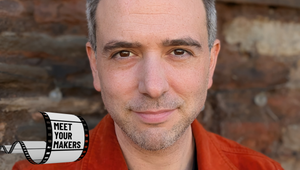
Is Humour So Back? And What Does it Look Like Today?

Comedy is a tough category to crack, however you look at it. Creatives from across the world have long tried to either create a formulaic approach to what ‘funny’ really means, or, on the opposite side of the spectrum, break the rules and hit audiences with the most unexpected punchlines.
Humour in advertising has certainly had many faces – almost as many as there are subjective opinions on what really constitutes ‘humour’. Add to that the ever-decreasing attention spans of gen z, the oversaturation of social media ads that makes their (and gen alpha’s) sense of humour a mythical being for most brands, and comedy becomes an elusive, almost unreachable concept.
On the other hand, a decent portion of the advertising world has a tendency to blame political correctness for the demise of humour. But does the fear of being ‘cancelled’ really need to tamper with good, funny copywriting? And are only ‘cancellable’ things funny anyway? Probably not.
Regardless of the ripples in this niche, adland seems to be trying to get its funny bones back – sometimes with tongue-in-cheek wit, sometimes with hilarious mascots, and other times with a bold attempt at the famous belly laugh.
The proof is all around us – Cannes Lions returns this year adorned with a new shiny ‘humour’ category, and we’re all anticipating seeing what the judges think of it. Ahead of the event, and given the growing pile of evidence that the ad world craves something light-hearted amid a burning world, I spoke to McCann Bristol’s executive creative director, Zane Radcliffe, and Aardman’s director and comedy virtuoso, Will Studd, to find out more about where this trend is headed.
Zane opens our discussion by telling me about his first years in advertising, when he started out as a junior creative at Leo Burnett and HHCL. In the ‘90s, “from the moment you walked on to the creative floor in the morning, to the moment you left, laughter rebounded round the offices.”
Some great hits came out of those days, for Tango, Pot Noodle, McDonald’s and John West, with “humour at their heart,” says Zane - more on them later.
“The creatives were never in any doubt that we were in the business of entertainment. That’s as true today as it ever was, but somewhere along the way, it got buried under an avalanche of purpose, and an illusion that every brand has a responsibility to change the world.”
He acknowledges that purpose was relevant if you were Amnesty International, Greenpeace, or even the Guardian, but less so for noodle brands, ketchup and spot cream. In his opinion, the need to ‘do good’ as a brand was oftentimes misplaced and unnecessary. “Creating a good product or service wasn’t good enough. And in time, that meant that when you presented a funny concept, a client might accuse you of not taking their brand seriously. I’ve had briefs that started with ‘no humour’ in the mandatories.”
Aardman’s Will Studd traces the loss of humour back to the 2010s, when big budget ads like John Lewis, Sainsbury’s or Marks and Spencer’s pushed for a more serious tone.
“Lots of creatives and commercial directors are tortured auteurs and probably resonate with a more purpose-driven style of filmmaking,” he says. “In animation, I think we’re more likely to be tortured comedians.”
It is true that these days, stop-motion and traditional animation has been creeping its way into more brand work – perhaps as part of adland’s attempt to go back to real entertainment. Will, too, believes that everything is cyclical. “Advertising is about standing out, so it makes sense that some folk reject a more serious-minded approach. Recently, I’ve seen some of our funny ads perform really well in terms of effectiveness. Our ‘Shaun the Sheep’ x Barbour ad last Christmas relied heavily on slapstick comedy and received full marks from System1!”
But, does ‘funny’ today constitute the same thing that it did 25 or 30 years ago? The ‘90s brand of ‘random’ humour influenced a lot of campaigns back in the day - ‘You’ve Been Tango’d’, Aardman’s ‘Maynards Juice Loose about this Hoose’.
Will believes that spots like these still show up – for example, Old Spice, or more recently, PlusNet’s floating fur ball. “But increasingly, I feel like there is a move away from this in-your-face randomness to a more playful whimsy vibe, like the recent Whiskas cat food commercials, or the FoxyBingo launderette series of spots, or my latest stop motion McDonald’s spots. These kinds of films seem more dreamlike and whimsical, compared to their noughties counterparts.”
“If we’ve ever needed to be entertained, it’s now,” adds Zane. But to him, humour has been slow to creep back. “The precursor to any hopes of a full-blown return to comedy were seen during the pandemic, where clients demanded ‘feelgood’ advertising. More often than not this only translated to shiny happy people dancing in kitchens and offices.”
Not to say there’s anything wrong with a ‘feelgood’ narrative. What Zane is against is the “uniformly lazy” interpretations of it, “that blighted big budget, happy-clappy ads post-pandemic.” Not to mention that ‘feelgood’ can’t really make you laugh.
“Laughter is an involuntary reflex,” adds Zane. “It’s hard to fake and impossible to hide. As a client, if you’re presented with a script and you burst out laughing, it’s really hard to row back from such a visceral response. Your laughter gave away that the creative connected with you.”
This was the case when Zane presented scripts to his Pot Noodle client at HHCL. “If she didn’t spit out her coffee laughing, we didn’t make the ad.”
He’s also played a part in one of the funniest ads in UK history, John West’s ‘Bear’. During Zane’s time at Leo Burnett, he and his creative partner, Mike Oughton, won a pitch for John West with the campaign line, ‘We endure the worst to bring you the best’. The first ad of the series earned them an ‘Ad of the Year’ in Campaign.
In his opinion, one doesn’t need to like ads to see when something is comedy gold. “And if there’s gold to be mined, ad agencies will lead a Klondike rush.” Looking back to last year’s Cannes Lions, Zane reminds me that the festival awarded Gold to short, funny ads from the likes of Apple and Snickers, so it’s significant that this year, humour has been crowned as a category.
The decision to create the new category, however, was met with mixed reactions. “Many argue that, by ring-fencing humour, the industry is saying that it can’t compete with the serious stuff. “So let’s give it a ball pit to play in,” explains Zane. “I get that, to some extent. But why shouldn’t a funny ad be every bit as powerful as a purposeful one? What greater purpose than to put a smile on people’s faces?”
On the flip side, those who are excited for the announcement of the new category will tell you it’s a big, bright step in the right direction, and Zane agrees with the sentiment too. “Because it legitimises what many of us have been telling clients for decades, that humour works. And the more we demonstrate to clients that humour sells, the more entertaining our industry landscape will become again.”
But the landscape has changed irreversibly after TikTok and its predecessor - Vine. Six-second videos are easier to laugh at for many, so are brands prepared to seize the short time they have to make us chuckle?
Will believes that it will doubtlessly be hard to replicate ultra short bursts of comedy without an authentic voice or community behind it. Aardman’s team saw big love for their ‘Creature Comforts’ clip since launching their TikTok channel, and Will believes that this was due to the unscripted format and natural tone.
“We’re still getting big hits on the older series too, with mini edits getting over 12 million views on Instagram alone,” he says. “I think stuff like this can cut through it if it feels real and unforced.”
Will also says he’s prepared to also bid farewell to narrative if the goal is to be funny. While everything does depend on the script, it’s evident that longer formats give more time for the ‘shtick’, while in compressed forms humour has to be tightly aligned with narrative.
“Overall I think it’s about being clear with your goals. In short form content, you have to make sacrifices and be clear about what’s important, so I don’t feel it’s a problem if the narrative suffers, if the goal is to be funny.”
Zane believes there are opportunities for a new generation of creatives who’ve been weaned on short, sharp social funnies, to apply this approach to their scripting. “After all, the laughing emoji can be an equally addictive and instantaneous measure of creative validation.”
Over at McCann, the team has just launched a plant-based sports snack from VOOM nutrition with a dark funny film. “‘The Climb’ owes more than a nod to serious sports documentaries like ‘Free Solo’, but it’s a slow burn to a deliciously unexpected comic twist,” Zane tells me.
“A seismic rug-pull that doesn’t feel the need to land the brand in the first six seconds. It’s the product of our client recognising that the sports health category can take itself very seriously.” So, as a challenger brand, McCann knew that the best chance to disrupt is to make people laugh.
When asked if any brand can suit humour, Will’s tone is similar. “Advertising is about being sticky, and not blending in,” he says. “So I think, yes, anyone can be funny, and the brands that will benefit the most are probably brands that contrast best with the whole approach. Audiences like to be surprised; incongruity sticks in our memories. The key thing is that the humour houses an honest key take out.”
So, everybody is allowed to be funny, but can they actually do it? Zane knows comedy is hard work and high risk - “There’s nowhere to hide when the client team reacts to your funny script like impassive Easter Island heads.” But what makes humorous content so hard isn’t really the fear of not landing the joke properly, it’s the always-there ‘butt’ of the joke.
“Humour always has a target,” says Zane. “Not always a person. Sometimes a behaviour, or an idea. In a world where offence is readily (and often rightly) taken, this can make clients understandably nervous.” But he’s also of the opinion that this shouldn’t paralyse creatives. “Ad humourists just need to really understand the parameters in which we can play.”
Looking at the present state of comedy in adland, and what it might become, both Will and Zane are hopeful. Will hopes for plenty of inventive characters and physical comedy, and Zane hopes that if a script elicits laughter, clients will start treating it as a rare and precious commodity.
“I’m continuing to see a move away from product-centric, brand-heavy advertising, and a bigger focus on fun. That’s a good thing from a director’s point of view. I can’t predict the future, but it’s nice to see mid-tier campaigns have the confidence of their bigger brothers and sisters to reduce the ‘ad-yness’ of their marketing,” explains Will.
Zane leaves us with a message to adland: “Don’t overthink it. Don’t tamper with it. Trust in the writing. And understand that people connect through humour. Our day-to-day lives can be busy, stressful and mundane. Many people don’t have large friendship groups of shiny happy people to dance with in their kitchens. Look those people in the eye and make them laugh. They’ll thank you for it. And they’ll remember you for it.”















